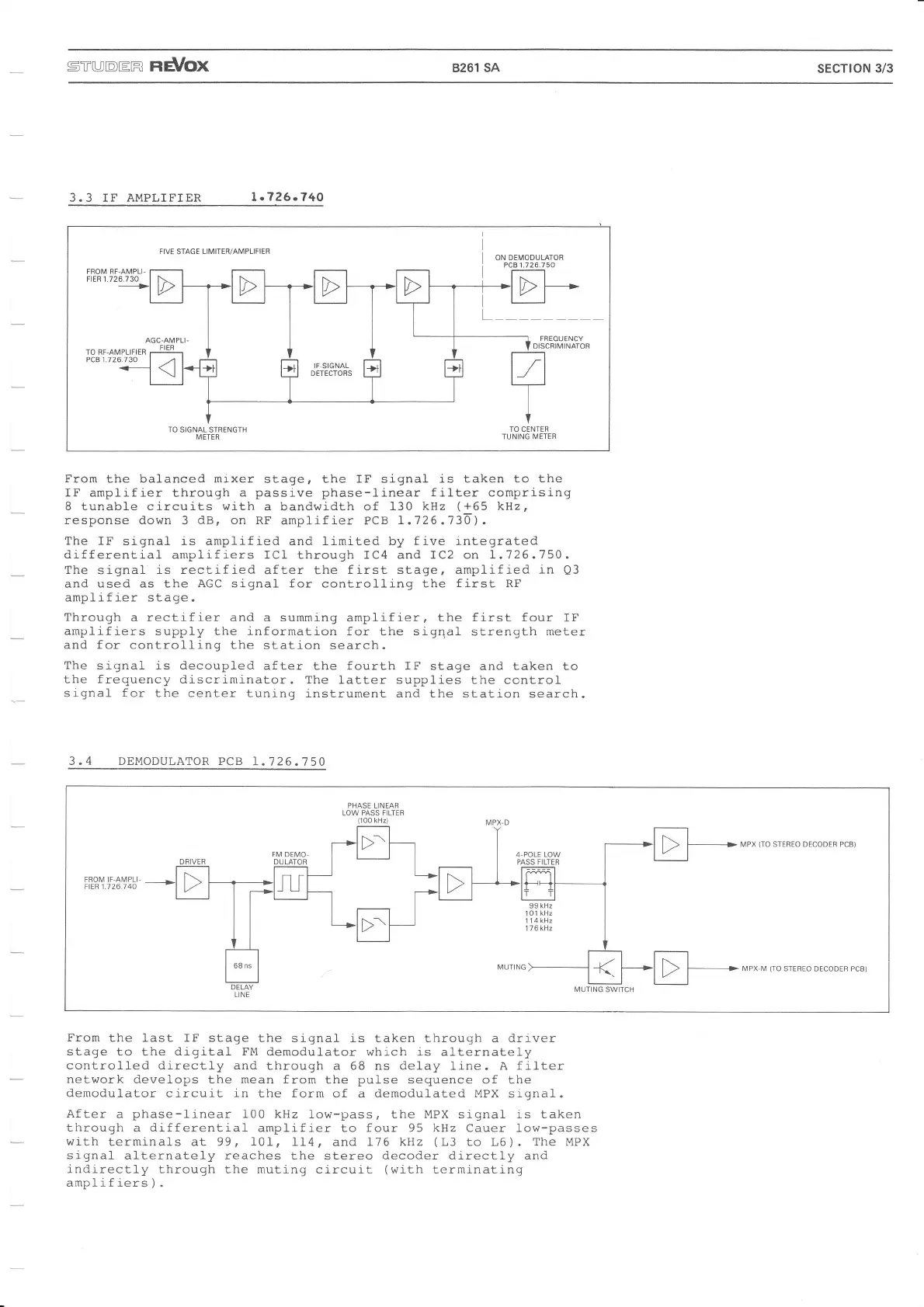STIJDtrR IIEVOX
8261 SA
SECTION
3/3
FIVE STAGE
LIMITER/AMPLIFIER
FRO[,1 NF-AMPLI
FtER 1.726.730
AGC-AMPLI.
FREOUENCY
DISCRIMINATOR
TO RF-AIVIPLIFIER
PCB 1.7 26.1 30
TO
SIGNAL STRENGTH
METER
TO CENTER
TUNING METER
3.3
IF AMPLIFIER
L.726.740
From
the
balanced mixer
stage, the
IF
signa]
is taken to
the
IF amplifier
through
a
passive phase-linear
fil-ter comprisj.ng
8 tunable circuits with
a bandwidth of
130 kHz
(+65
kHz,
response down
3
dB, on RF
amplifier PCB
1.726.73dt.
The
IF signal is amplified
and limj,ted
by five integrated
differential
anplifiers ICI through IC4 and IC2 on L.'126.750.
The
signal
is rectified
after the
fj-rst stage, amplified
in
Q3
and used as
the AGC signal for controlling the
first
RF
amplifier stage.
Through
a rectifj.er and a summing
amplifier,
the first four
IF
amplifiers supply the information for
the
sig4a1
strength
meter
and for
controll-ing the station
search.
The
signal is decoupled
after the fourth IF stage
and taken to
the
frequency
discriminator.
The latter supplies
the contro.L
signal for the center tuning
instrument and
the station search.
3.4 DEMODULATOR
PCB L.126.750
MPX
ITO
STEREO DECODER PCB)
FROM IF-AMPLI
F\EB1l2614A
MPX,M
(TO
STEBEO DECODER PC8)
From
the last IF
stage the signal rs taken through a driver
stage
to the
digital FM
demodulator which is alternately
controll-ed directly
and through a 68
ns
delay
line.
A filter
network
develops the mean from
the
pulse
sequence of the
demodul-ator
circuit in the form
of a
demodulated MPX
signal.
After
a
phase-linear 100
kHz low-pass, the MPX signal is taken
through
a
di-fferential
amplifj.er to four 95 kHz Cauer 1ow-passes
with
terrninal,s
at
99, l0l-, 114,
and
L]
6
kKz
(L3
to L6).
The MPX
signal
alternateLy reaches the
stereo
decoder directly and
indirectly
through the muting
ci-rcuit
(with
terminatrng
ampli-f iers
).
